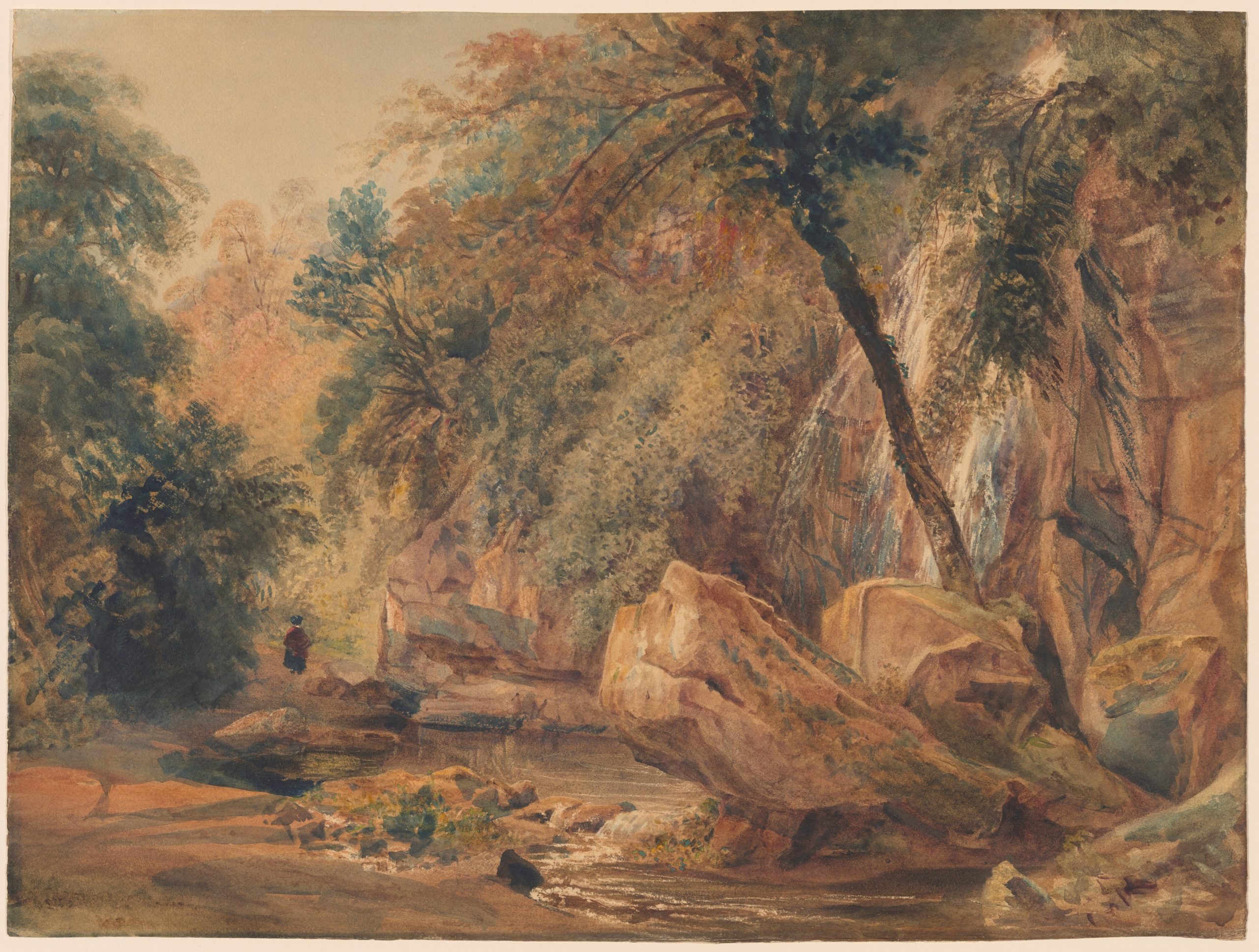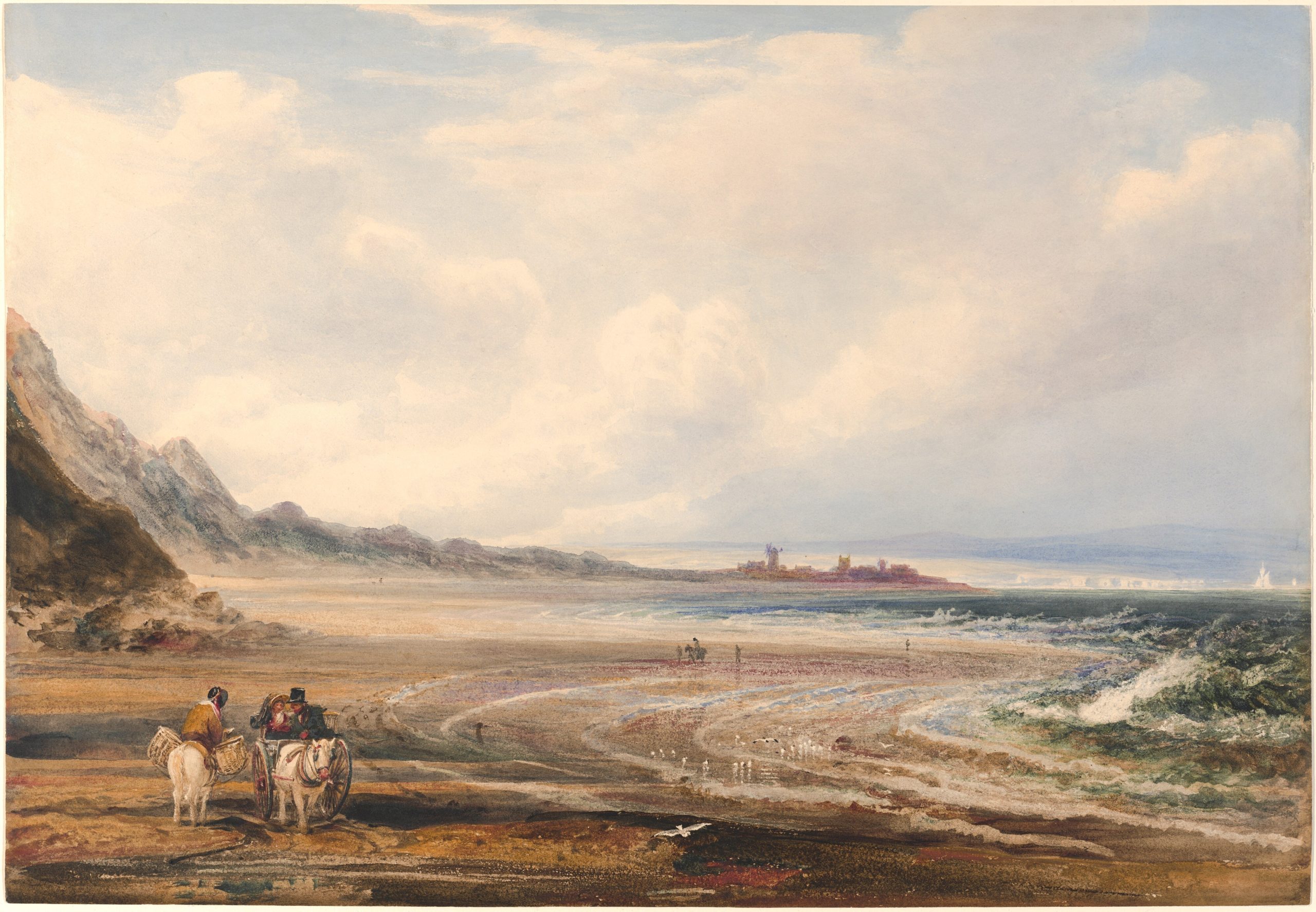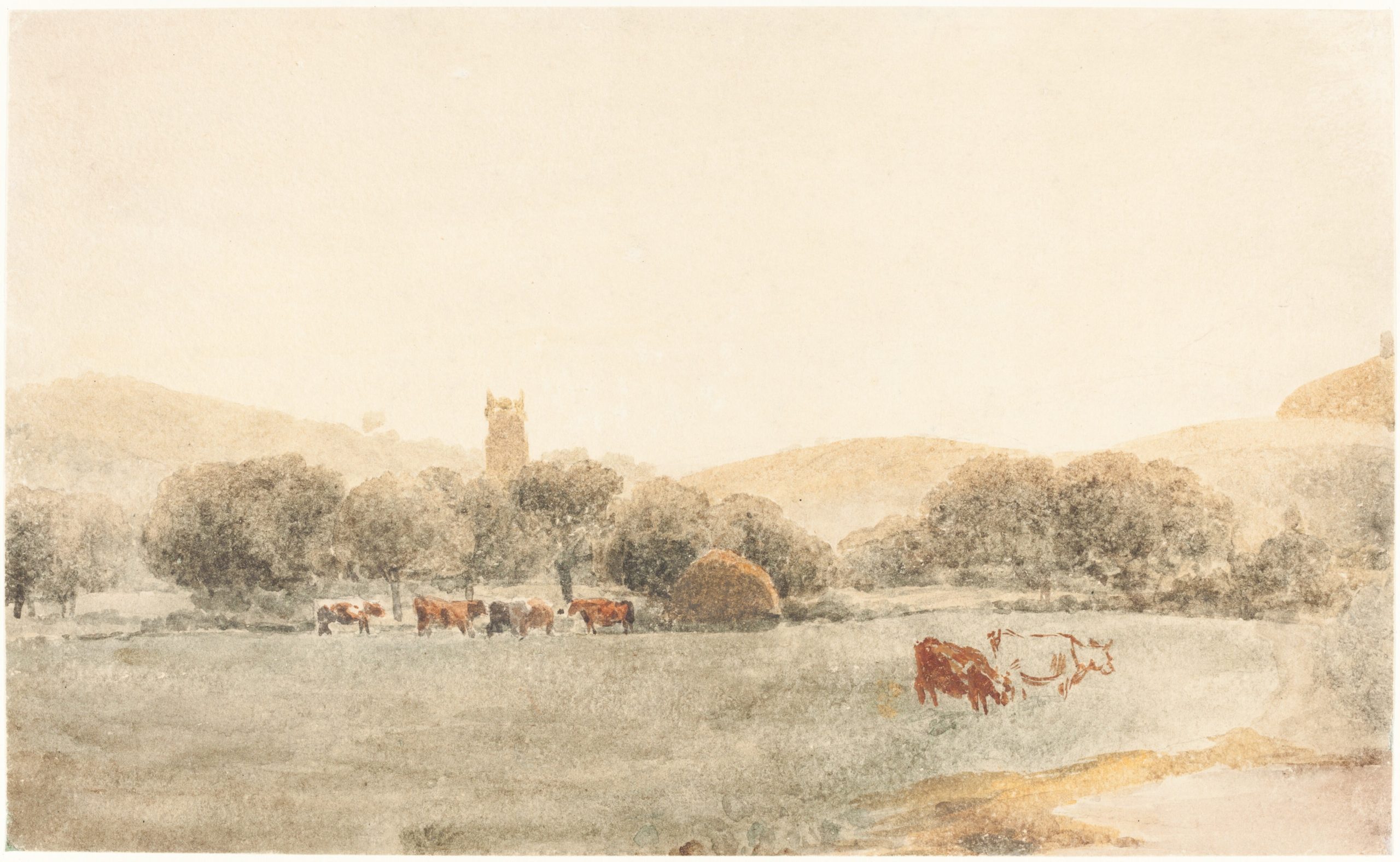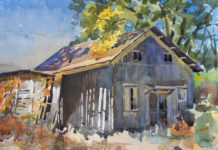Intended to follow in his father’s footsteps and become a physician, Peter De Wint (British, 1784-1849) instead pursued his love of art, taking an apprenticeship with the engraver and portrait painter John Raphael Smith. Four years later, he purchased his release with the promise of 18 landscape paintings in 24 months’ time, and fell under the tutelage of Dr. Monro, a well-known patron of young artists, who admired De Wint’s sketches. A course of study at the Royal Academy schools a few years later cemented his reputation as a painter. And although he worked extensively in oils, he became best known as one of the finest watercolorists of his generation.

Peter DeWint
c. 1841, watercolor on wove paper, 20 1/4 x 27 1/8 in.
National Gallery of Art; Ailsa Mellon Bruce Fund
A short visit to Normandy in 1828 marked De Wint’s only journey abroad. As a result, his work is almost entirely devoted to the English countryside. Distinguished by broad washes of deep color and a strong sense of light and shade, his paintings were prized for their fidelity to ordinary aspects of nature, which he painted directly in the open air.

Peter DeWint
1838 (watercolor with gouache over graphite with scratching out, 19 5/16 x 28 1/8 in.)
National Gallery of Art; Gift of Dian Woodner

Peter DeWint
(watercolor over graphite on wove paper, 8 5/8 x 14 3/16 in.)
National Gallery of Art; Paul Mellon Collection
For more inspiring stories like this one, sign up for our free weekly e-newsletter.








Lovely articles! Thanks